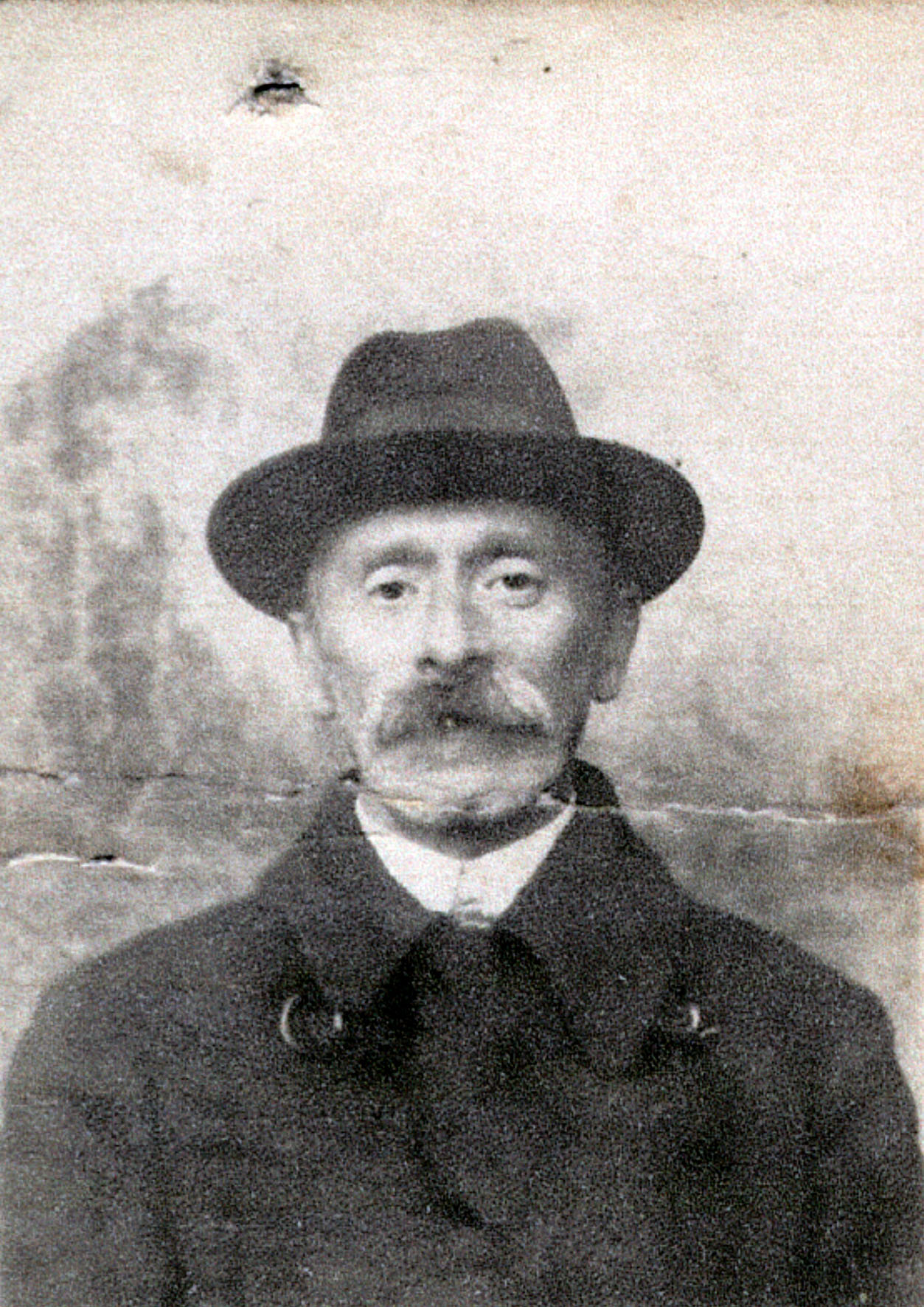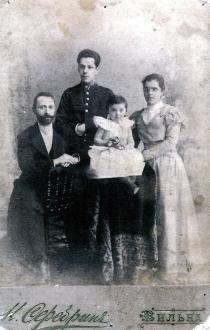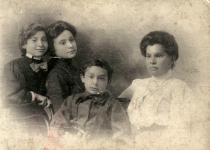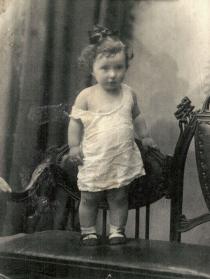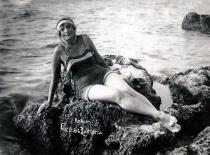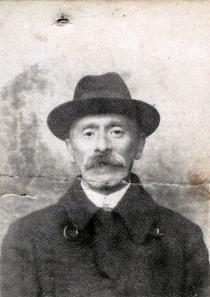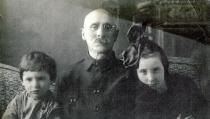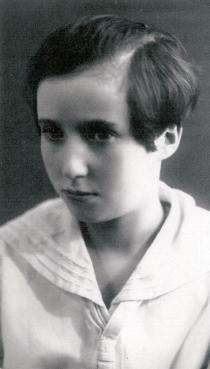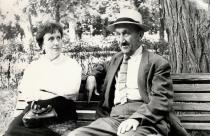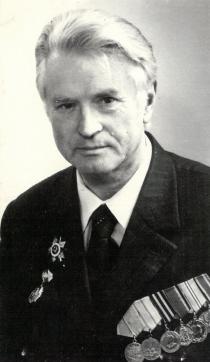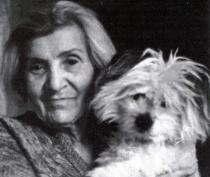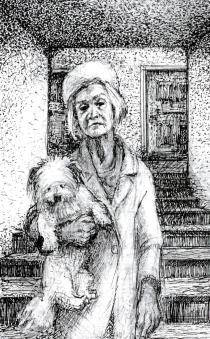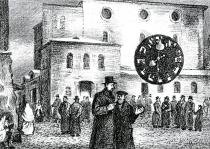My grandfather on my mother's side Movshe-Girsh Meyer Begam. The photo was taken in Moscow in 1928 in order to mail it to my mother in the Middle East.
In 1906 my grandmother's cousin Antokolsky, a lawyer living in Moscow, invited my grandmother and her family to move to Moscow. He had a residence permit to live in Moscow and could obtain one for them. My grandparents and their family settled down in Losinustrovskoy, in the southwestern part of Moscow. They rented a wooden house. These were not the best conditions, but it was an opportunity to get out of the Pale of Settlement and give their children good education. Living in Moscow changed my grandparents' way of life. My grandfather put his prayer book, tallit and the other accessories of Jewish religious observance to the bottom of his box and never took them out again. They spoke Russian to each other, their surrounding and their children and learned very soon to speak it without an accent. My grandfather liked reading newspapers and was interested in all the latest developments.
My grandfather was a fur dresser and ran other various errands. He ran all kinds of errands for Antokolsky, the lawyer who helped them move to Moscow. After the Revolution of 1917 my grandfather became a vendor. He sold toffees. He lost his faith in God under the influence of his life in Moscow as well as scientific and technical progress. He constantly told us that there was no God from a scientific point of view. He left a will to give his body to a dissection room so it could be of 'use to mankind'. It was an unusual and brave act for his time. My grandfather died of cancer in 1934. Of course, his will was not fulfilled. He was buried in the Jewish cemetery in Moscow, but without a Jewish ritual.
